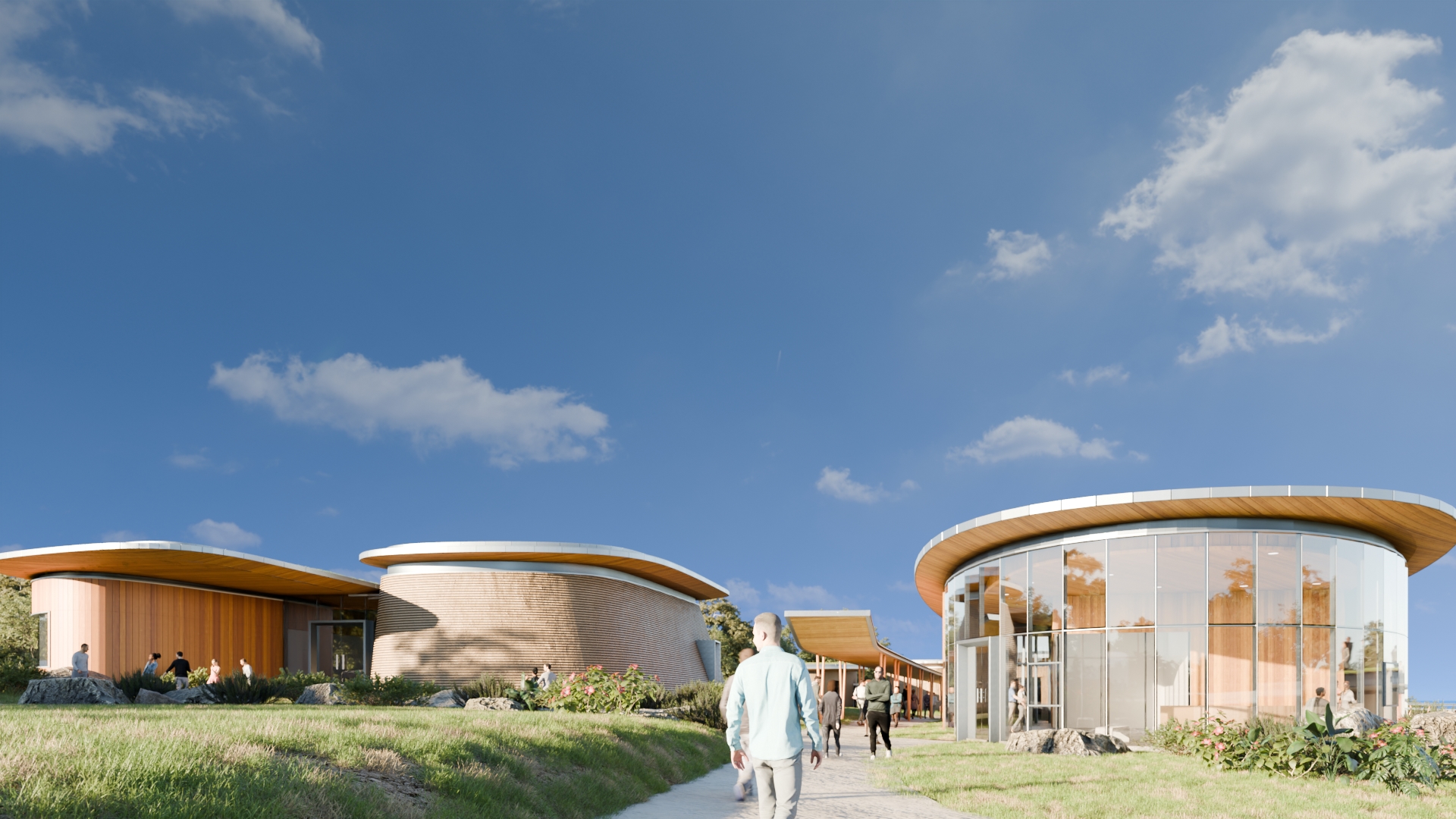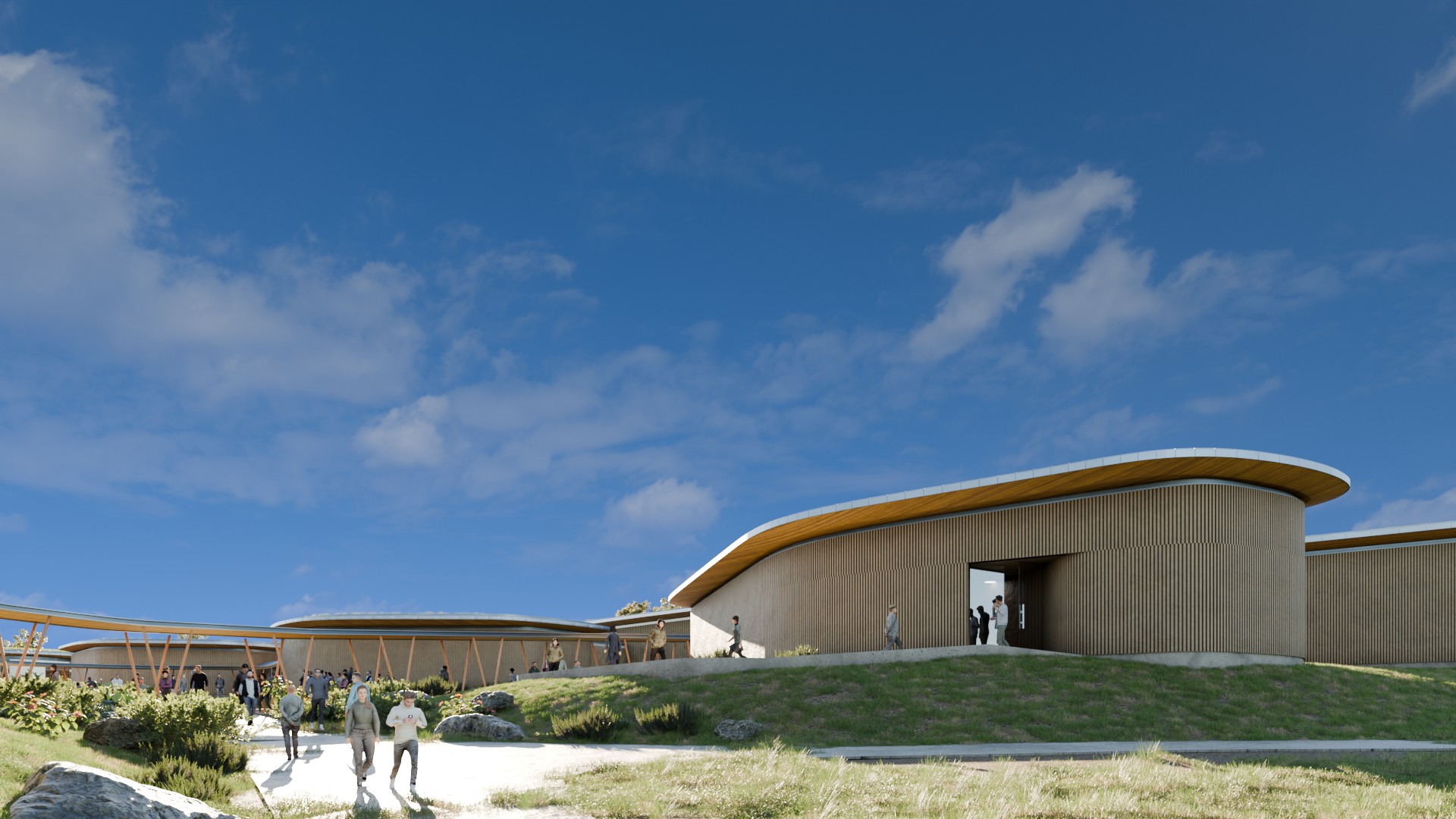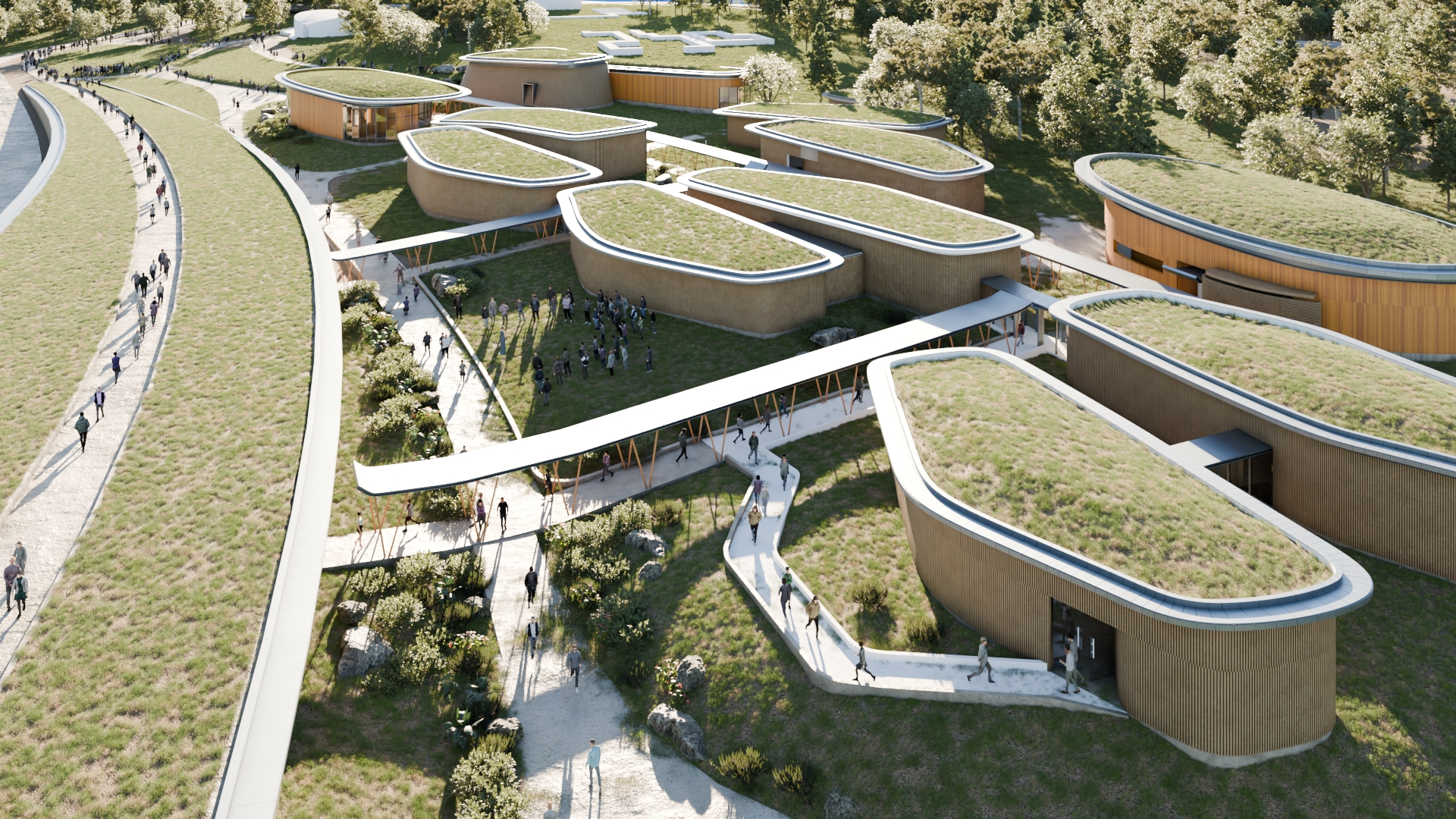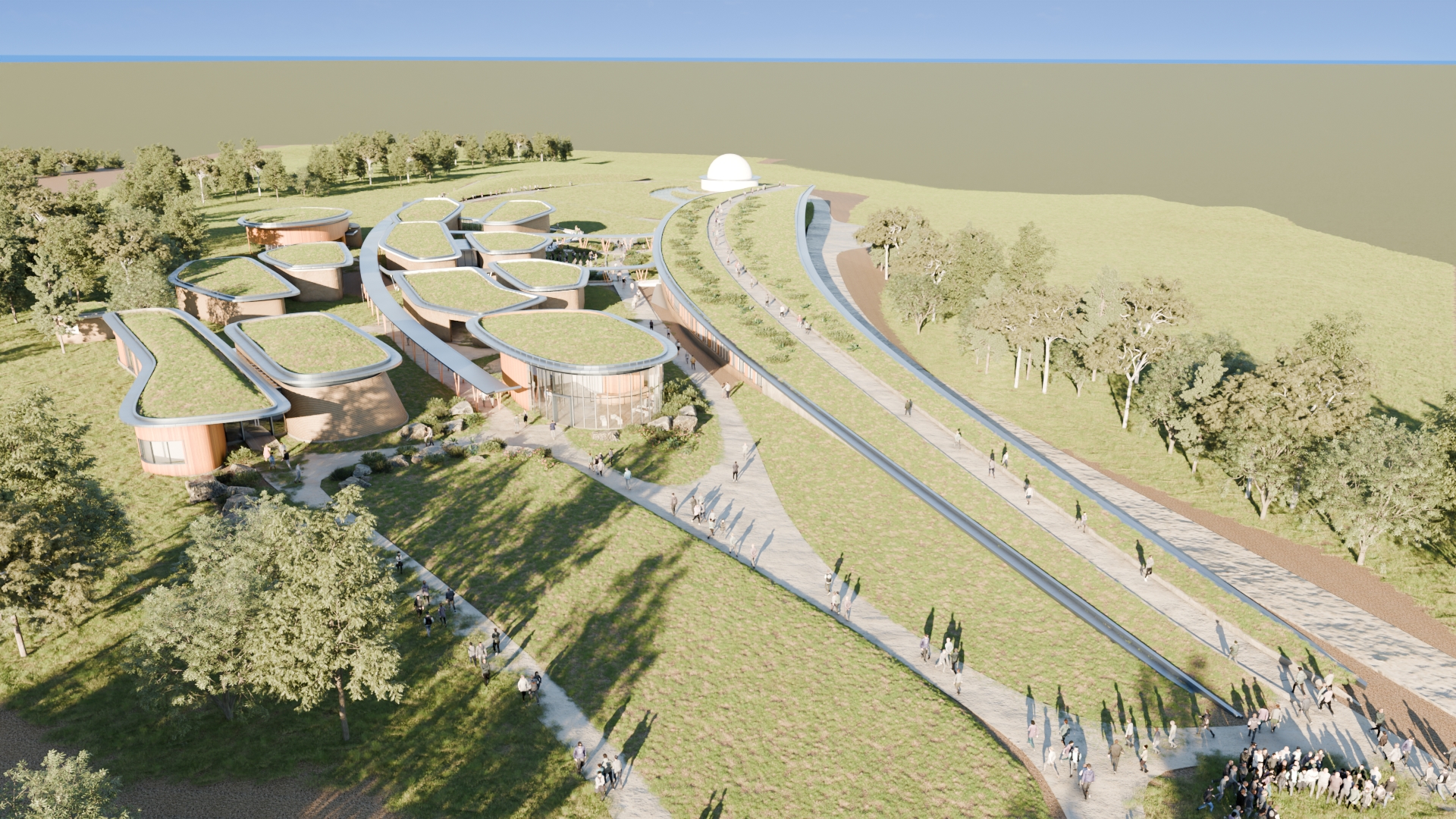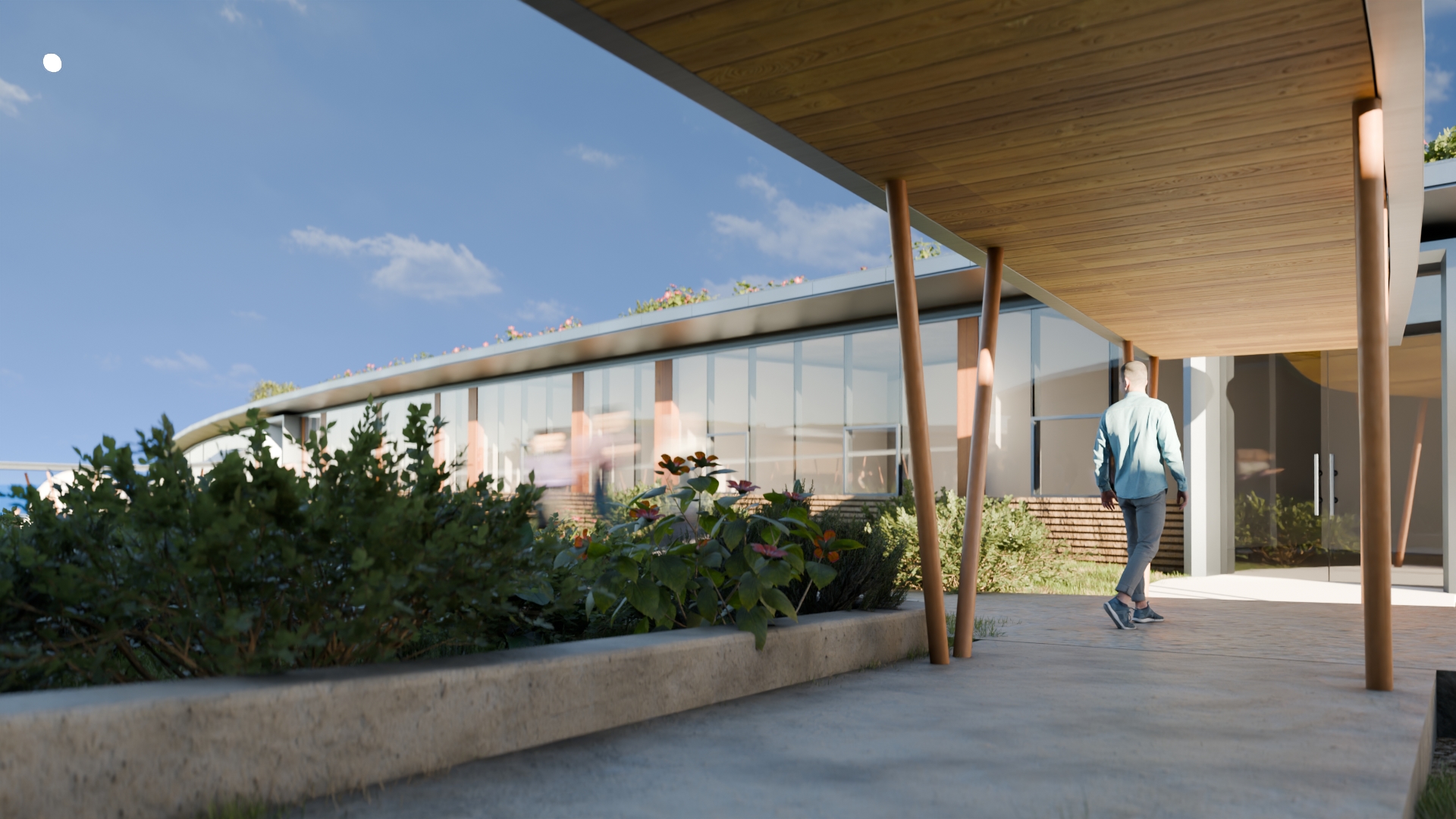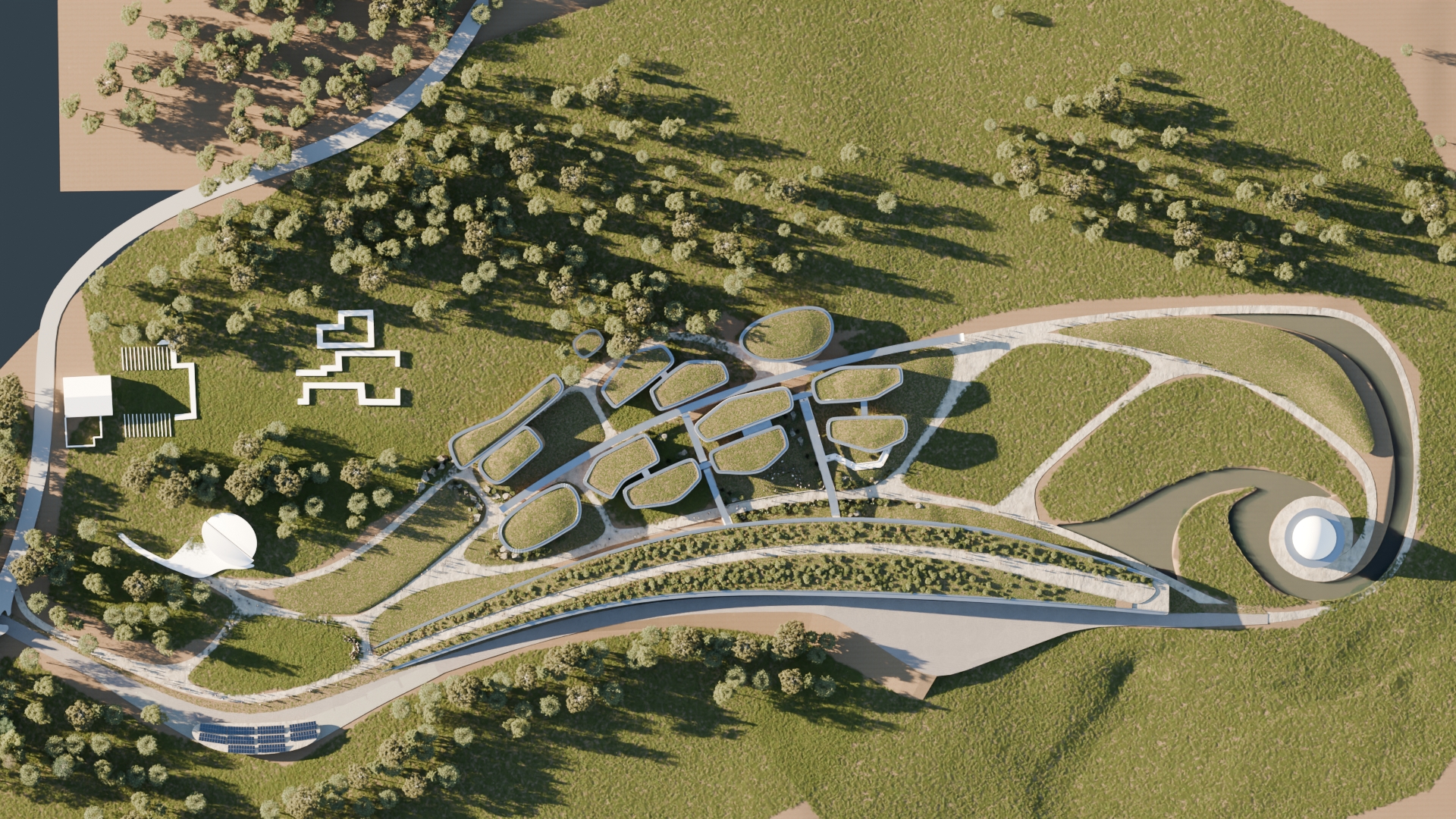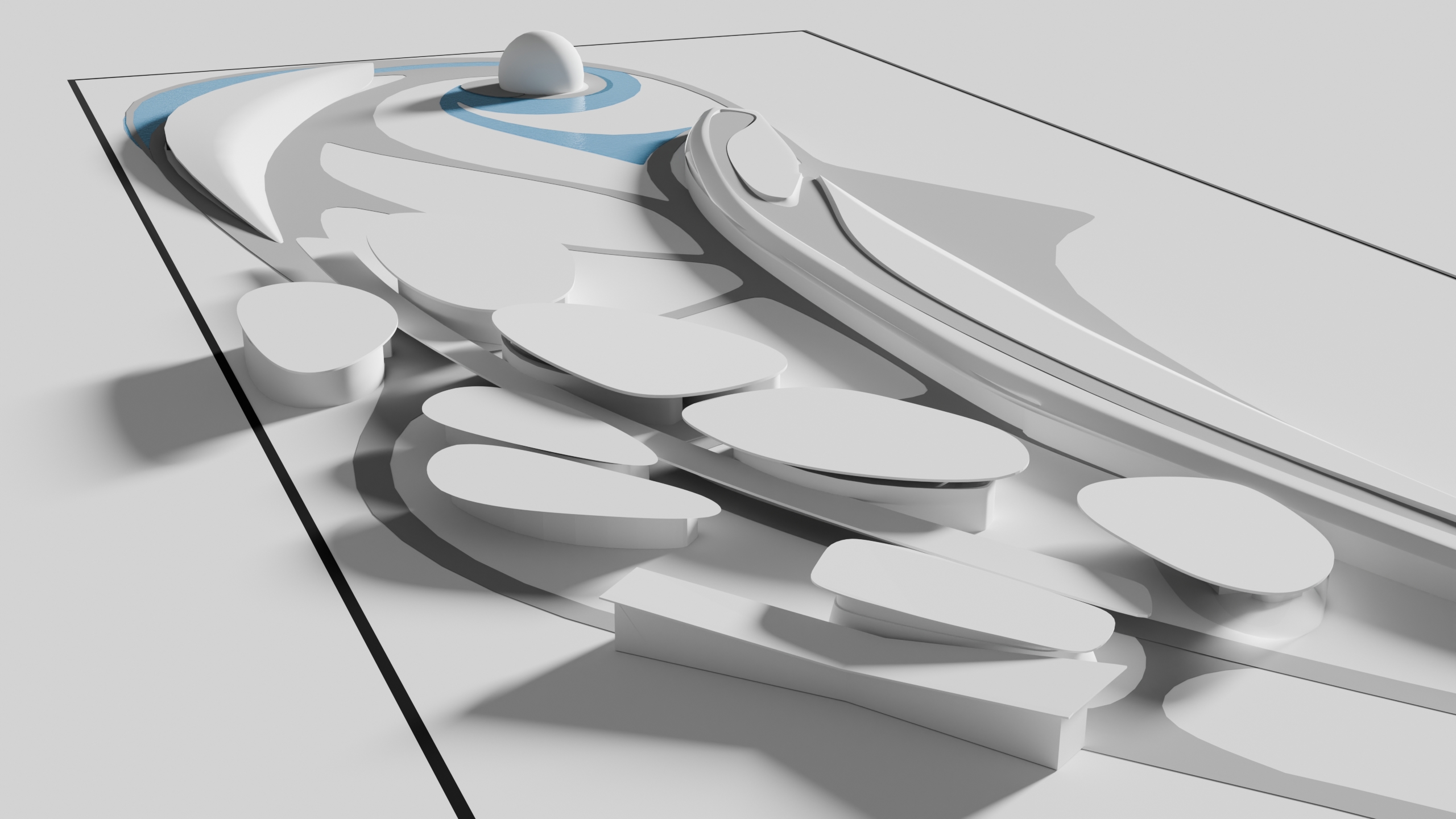Location: ex fundo vaitea, isla de pascua
Typology: Museum
Size: 6,680 m2
Status: Submission
The master plan is inspired by the Rapa Nui art of tattooing for the organization of the project's programmatic requirements. The outdoor public programs are located near the entrance and welcome the visitor. The ceremonial esplanade, exterior exhibition and covered patio are the beginning of the circulation circuit and guide the visitor to the entrance portal of the complex. The circulation routes are created by undulating shapes which, together with the architecture, carve public, semi-public and private areas of permanence according to the program requirements. These shapes created by waves and wind sculpt the topography throughout the terrain and organize the programmatic sequence of the project.
A green roof arises from the existing topography and is part of the composition, being an elevated park that covers the most extensive programmatic areas of the project, reducing its scale and creating, together with the volumes of the galleries, an outdoor plaza. In turn, this park visually separates the service and parking areas from the community spaces. Its surface acts as a connector between the museum and future programs of the master plan, such as the artisan market, botanical park, observatory, and hotel.
PROJECT:
The museum is composed of independent volumes to maintain a harmonious scale with the island and the existing structures. The volumes that house the entrance hall and auditorium form the entrance portal of the complex, the beginning of the museum tour and meeting point. These volumes, nestled within the existing topography, are organized through linear, curved circulation paths, resembling a school of fish, creating spaces for outdoor relaxation and celebration between them.
Its form is inspired by the "Hare Paenga," ancient buildings elongated and curved to mitigate the effects of wind and rain. Its location and facade composition take advantage of the views, the connection with the landscape, and the entry of natural light into the spaces. The aerodynamic and elongated form is especially expressed in the exhibition spaces, optimizing their layout. This morphology is the basis for the design of the museum buildings, creating fluid spaces that evoke sensations of movement through nature. Its green roofs protect the buildings from solar radiation, mitigate rainwater, and provide thermal insulation to the spaces.

